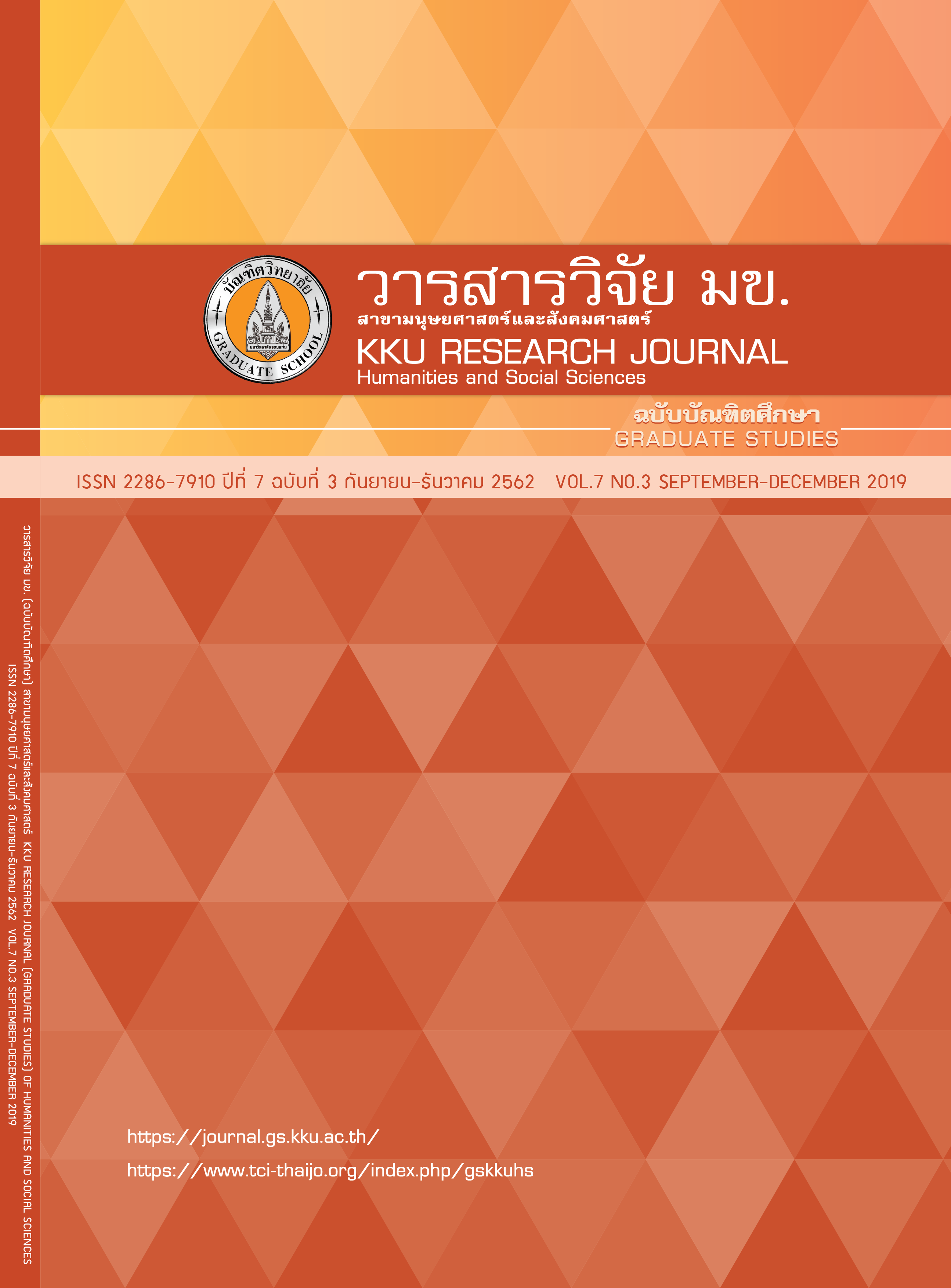บุพปัจจัยของการแสดงออกที่ดีของนกปรอดหัวโขนเคราแดงในสนามแข่งขัน
คำสำคัญ:
บุพปัจจัย, การแสดงออกที่ดี, นกปรอดหัวโขนเคราแดงบทคัดย่อ
การวิจัยมีวัตถุประสงค์เพื่อศึกษา (1) สภาพทั่วไปของผู้เลี้ยงและนกปรอดหัวโขนเคราแดงที่ใช้สำหรับประกวดแข่งขัน และ (2) อิทธิพลของคุณลักษณะพื้นฐานนก แหล่งกำเนิด ราคานก อาหารการกินที่มีต่อการแสดงออกที่ดีของนกปรอดหัวโขนเคราแดงในสนามแข่งขัน ใช้ระเบียบวิธีการวิจัยเชิงปริมาณโดยใช้แบบสอบถามเก็บข้อมูลจากผู้เลี้ยงนกปรอดหัวโขนเคราแดงเพื่อประกวดแข่งขันจำนวน 186 ราย วิเคราะห์ข้อมูลด้วยเทคนิคการวิเคราะห์เส้นทางและสถิติพรรณนา ผลการวิจัยพบว่า (1) ผู้เลี้ยงนกปรอดหัวโขนเคราแดงเพื่อประกวดแข่งขันที่อาศัยในจังหวัดกรุงเทพมหานครส่วนใหญ่อายุเฉลี่ย 44 ปี สำเร็จการศึกษาระดับปริญญาตรี เลี้ยงนกที่บ้านจำนวน 7 ตัว มีประสบการณ์เลี้ยงนก 12 ปี ประสบการณ์แข่งนก 9 ปี อีกทั้งมีความพึงพอใจกับการประกวดแข่งขันนกปรอดหัวโขนเคราแดงในระดับค่อนข้างสูง ส่วนนกปรอดหัวโขนเคราแดงที่ใช้สำหรับประกวดแข่งขันของผู้เลี้ยงในพื้นที่กรุงเทพ มหานครส่วนใหญ่อายุ 3-7 ปี ผ่านประสบการณ์แข่งขันที่สนามเฉลี่ย 3-5 ปี ส่วนใหญ่เป็นนกสายพันธุ์ไทย มีโครงสร้างร่างกายที่ใหญ่และมีนิสัยก้าวร้าวระดับปานกลาง เป็นนกที่มีแหล่งกำเนิดจากนกป่า มีราคาซื้อขายในแวดวงนกสูง เรื่องการแสดงออกที่ดีของนกปรอดหัวโขนเคราแดงในสนามแข่งขันพบว่านกส่วนใหญ่มีความขยันร้องมากที่สุด และ (2) อาหารการกินมีอิทธิพลทางตรงต่อการแสดงออกที่ดีมากที่สุด ส่วนปัจจัยที่มีอิทธิพลรวมต่อการแสดงออกที่ดีนกปรอดหัวโขนเคราแดงในสนามแข่งขันมากที่สุดคือ คุณลักษณะพื้นฐานนก
เอกสารอ้างอิง
the birdmen for contest. KKU Research Journal (Graduate Studies)
Humanities and Social Sciences. 2019; 7(1). Thai.
2. Phanwattana P. Red-whiskered Bulbuls and utilization for community
police relations in the south. Hat Yai Academic Journal. 2014; 12(2):
105-11. Thai.
3. Phanwattana P. The expectations of the breeding Red-whiskered
Bulbuls for contest in Srinakarin Bangkok area. Journal of
Chandrakasemsarn. 2016; 23(1): 17-32. Thai.
4. Kamtaeja S, Sitasuwan N, Chomdej S, Jatisatienr A, Mennill DJ.
Species-distinctiveness in the vocal behaviour of six sympatric
bulbuls (Genus pycnonotus) in South-East Asia. Journal Compilation
BirdLife Australia. 2016: 112.
5. Krejcie RV, Morgan DW. Determining sample size for
research activities. Educ. Psychol. Meas. 1970; 30: 607-10.
6. Palinkas LA, Horwitz SM, Green CA, Wisdom JP, Duan N,
Hoagwood K. Purposeful sampling for qualitative data collection
and analysis in mixed method implementation research.
Adm Policy Ment Health. 2015; 42(5): 533-44.
7. Blair J, Conrad FG. Sample size for cognitive interview
pretesting. Public Opin. Q. 2011; 75(4): 636-58.
8. Peeters MJ, Beltyukova SA, Martin BA. Educational testing
and validity of conclusions in the scholarship of teaching and
learning. Am. J. Pharm. Educ. 2013; 77(9): 186.
9. Lafave L, Tyminski S, Riege T, Hoy D, Dexter B. Content
validity for a child care self-assessment tool: Creating healthy
eating environments scale. Can J Diet Pract Res. 2015; 77(2):
89-92.
10. Benedict EM, De Jong MG, Baumgartner H. Socially desirable
response tendencies in survey research. J. Mark. Res. 2010; 47(2):
199-214.
11. Prasith-rathsint S. Social science research methodology.
Bangkok: Samlada; 2011. Thai.




